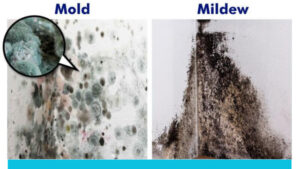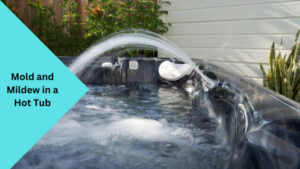Welcome to our comprehensive guide on preventing, treating, and maintaining a hot tub free from the pesky and unsightly invaders, mold, and mildew. If you are a hot tub owner, you may have encountered this common issue at some point. In this informative blog post, we will explore the causes, signs, prevention techniques, treatment methods, and essential maintenance practices to ensure your hot tub remains a source of relaxation and enjoyment, rather than a breeding ground for mold and mildew.
Hot tubs are a popular addition to many homes, providing a soothing retreat from the stresses of everyday life. However, without proper care and attention, mold and mildew can quickly infiltrate your hot tub, diminishing its appeal and potentially posing health risks. By understanding the causes and implementing preventive measures, you can enjoy your hot tub worry-free.
In this guide, we will delve into the reasons behind mold and mildew growth, identify the signs and symptoms to watch out for, and equip you with effective prevention techniques and treatment methods. Additionally, we will provide invaluable tips for maintaining a mold and mildew-free hot tub to ensure its longevity and your continued satisfaction.
Understanding Mold and Mildew

Before we explore the prevention and treatment strategies, let’s take a moment to understand mold and mildew. Both mold and mildew are types of fungi that thrive in warm, humid environments, making hot tubs an ideal breeding ground. These organisms reproduce through spores and can quickly spread if left unchecked.
Mold and mildew not only affect the aesthetic appeal of your hot tub but can also pose health risks. Common symptoms associated with exposure to mold and mildew include respiratory issues, allergic reactions, and skin irritation. By promptly addressing mold and mildew growth, you can protect your health and prolong the lifespan of your hot tub.
Causes of Mold and Mildew in Hot Tubs
To effectively combat mold and mildew growth, it’s crucial to understand the underlying causes. By addressing these causes, you can nip the problem in the bud and prevent their recurrence. Here are the primary culprits contributing to mold and mildew formation in hot tubs:
- Improper Water Chemistry: When the pH and sanitizer levels in your hot tub are not properly balanced, it creates an environment conducive to mold and mildew growth.
- Inadequate Circulation and Filtration: Insufficient water circulation and filtration can lead to stagnant areas where mold and mildew thrive.
- Poor Hot Tub Cover Maintenance: If your hot tub cover is not properly maintained or doesn’t fit tightly, moisture can accumulate, providing an ideal environment for mold and mildew.you should know Complate Guide to Prolong its Lifespan How to Clean a Hot Tub Cover
- Contamination from the Environment: Mold and mildew spores can enter your hot tub through various sources, including rainwater, debris, or swimmers carrying them from elsewhere.
By addressing these causes through proactive measures, you can significantly reduce the risk of mold and mildew formation in your hot tub.
Signs and Symptoms of Mold and Mildew in Hot Tubs
Identifying the presence of mold and mildew in your hot tub is crucial for timely intervention. Here are some common signs and symptoms to watch out for:
- Visible Growth: Mold and mildew often appear as dark patches, black or white specks, or even fuzzy growth on surfaces such as the hot tub shell, jets, and covers.
- Unpleasant Odor: If your hot tub emits a musty or damp smell, it could indicate the presence of mold and mildew.
- Respiratory Irritation: If you or your hot tub users experience an increase in allergies, coughing, sneezing, or other respiratory issues when using the hot tub, mold and mildew could be the culprit.
- Water Discoloration: Mold and mildew can discolor the water in your hot tub, turning it cloudy or even greenish. if you think about Can Too Much Chlorine Cause Cloudy Pool Water? Exploring the Effects and Solutions
If you observe any of these signs, taking immediate action is essential to prevent further growth and damage to your hot tub as well as safeguard the well-being of those using it.
Prevention Techniques
Prevention is always better than cure when it comes to mold and mildew in a hot tub. By implementing the following techniques, you can create an inhospitable environment for these unwelcome guests:
Maintaining Proper Water Chemistry
- Regularly test the pH and sanitizer levels using reliable test strips or a digital tester. To explore more details and considerations regarding chlorine vs Baquacil, our comprehensive guide on Chlorine vs Baquacil which pool sanitizer is right for you? has you covered.
- Follow the manufacturer’s recommendations for appropriate chemical adjustments to maintain the water balance.
- Consider using a sanitizer that specifically targets mold and mildew prevention.
Regular Cleaning and Sanitization
- Set a consistent schedule for cleaning and sanitizing your hot tub.
- Thoroughly clean all surfaces, including the shell, jets, filter, and cover, using products specifically designed for hot tub maintenance.
- Remove any debris, leaves, or organic matter that may have accumulated inside the hot tub.
Adequate Circulation and Filtration
- Ensure your hot tub’s circulation system is functioning optimally.
- Regularly clean or replace the filter to prevent clogging and ensure efficient filtration.
- Monitor and maintain the appropriate water flow rate to prevent stagnant areas.
By incorporating these preventive measures into your hot tub maintenance routine, you can significantly reduce the risk of mold and mildew growth, creating a healthy and enjoyable hot tub experience.
Treatment Methods
Despite your best preventive efforts, mold and mildew may occasionally find their way into your hot tub. Prompt treatment is crucial to prevent further damage and ensure safe use. Here are some effective treatment methods:
Shocking the Hot Tub
- Shocking the hot tub involves adding a higher than usual dose of sanitizer to eradicate any existing mold and mildew.
- Follow the manufacturer’s instructions for the appropriate type and amount of shock treatment.
- Be sure to run the hot tub pumps and jets after shocking to circulate the treated water.
To explore more details and considerations regarding shocking the pool, our comprehensive guide on How Long After Shocking a Pool Can You Swim has you covered.
Draining and Refilling the Hot Tub
- In severe cases, it may be necessary to drain and refill the hot tub completely.
- Before refilling, clean and inspect the hot tub thoroughly to ensure there are no hidden mold or mildew sources.
- After refilling, bring the water back to the appropriate chemical balance.
Using Mold and Mildew Cleaners
- There are numerous mold and mildew cleaners available specifically formulated for hot tubs.
- Follow the instructions provided with the cleaner, ensuring it is safe to use with your hot tub’s materials.
- Apply the cleaner to the affected areas, scrub gently, and rinse thoroughly.
By choosing the most suitable treatment method based on the severity of the mold and mildew issue, you can effectively eliminate these unwanted intruders and restore your hot tub’s cleanliness.
DIY Tips for Mold and Mildew Removal
For hot tub owners who prefer a more hands-on approach, here are some DIY tips for mold and mildew removal:
- Vinegar Solution: Create a solution of white vinegar and water in equal parts. Apply the solution to the affected areas using a spray bottle, allowing it to sit for a few minutes. Scrub gently and rinse thoroughly. Vinegar’s acidic properties help kill mold and mildew while being safe for most hot tub surfaces.
- Baking Soda Paste: Mix baking soda with water to achieve a paste-like consistency. Apply the paste to the affected areas and let it sit for 15-20 minutes. Scrub gently and rinse thoroughly. Baking soda’s mild abrasive nature helps remove mold and mildew stains.
- Bleach Solution (Caution: Not suitable for all hot tub surfaces): Dilute a small amount of bleach with water and apply it to the affected areas using a sponge or cloth. Let it sit for 10-15 minutes, then rinse thoroughly. Ensure the bleach is compatible with your hot tub’s materials and always follow safety guidelines and manufacturer recommendations.
Remember, safety should always be your top priority. Wear protective gloves and goggles when handling cleaning solutions, and thoroughly rinse the hot tub before using it again.
Maintaining a Mold and Mildew-Free Hot Tub
Preventing mold and mildew growth requires ongoing maintenance and care. Implement the following practices to maintain a clean and enjoyable hot tub environment:
Scheduled Cleaning Routine
- Establish a regular cleaning routine for your hot tub, including surface cleaning and filter maintenance.
- Clean the hot tub cover regularly, removing any debris or moisture accumulation.
- Schedule deep cleanings periodically, ensuring all areas, including hard-to-reach spots, are thoroughly cleaned.
Monitoring Water Quality
- Test the water chemistry regularly to ensure optimal balance.
- Establish a log to track test results, chemical adjustments, and maintenance activities.
- Monitor the water clarity and odor, addressing any changes promptly.
Inspecting and Repairing Damaged Parts
- Regularly inspect all hot tub components, including seals, cover straps, and jets.
- Replace damaged or worn-out parts promptly to prevent moisture buildup and potential mold and mildew issues.
- Consult the manufacturer’s recommendations for inspection procedures and replacement parts.
By proactively maintaining your hot tub and addressing any issues promptly, you can enjoy a mold and mildew-free environment for years to come.
Conclusion
In conclusion, the presence of mold and mildew in your hot tub can be a significant inconvenience and potential health hazard. However, by understanding the causes, recognizing the signs, and implementing preventive measures, you can effectively combat their growth and maintain a clean and inviting hot tub.
Remember to regularly monitor and maintain proper water chemistry, embrace regular cleaning and sanitization practices, and ensure adequate circulation and filtration. When faced with mold and mildew, choose suitable treatment methods such as shocking, draining and refilling, or utilizing mold and mildew cleaners. Alternatively, you can opt for DIY solutions like vinegar, baking soda, or bleach (with caution).
Finally, prioritize ongoing maintenance, including scheduled cleaning routines, water quality monitoring, and thorough inspections of hot tub components. By following these practices, you can maximize your hot tub enjoyment while minimizing the risk of mold and mildew.
Now that you are armed with the knowledge and strategies to conquer mold and mildew in your hot tub, it’s time to take action and reclaim the clean and relaxing oasis you deserve. Happy hot tubbing!

Greetings, fellow pool enthusiasts! I’m Turner Davis, your dedicated guide to the world of pool care and maintenance. With over a decade of experience in the field, I’ve made it my mission to transform ordinary pools into extraordinary aquatic retreats.

